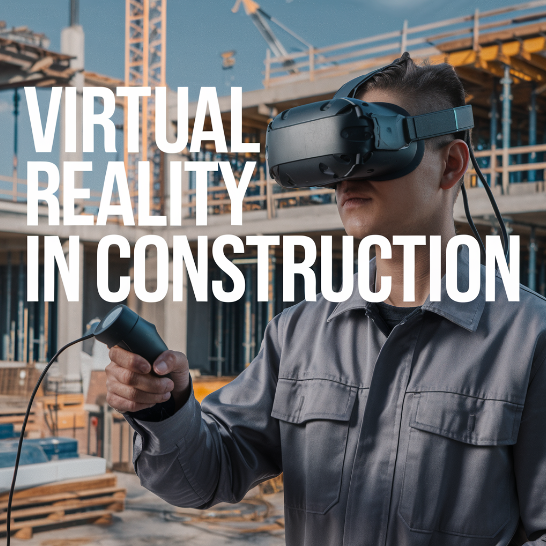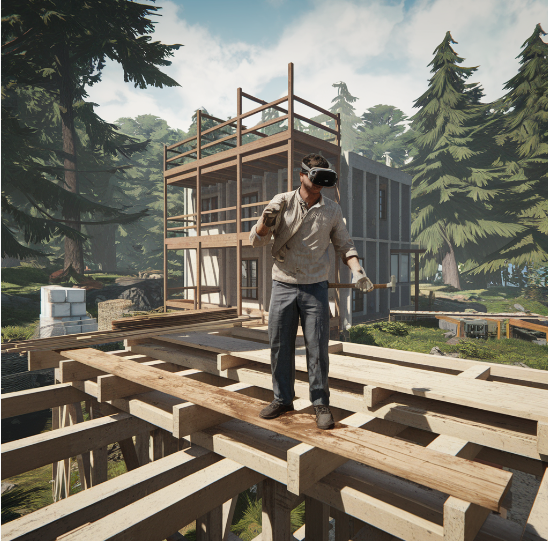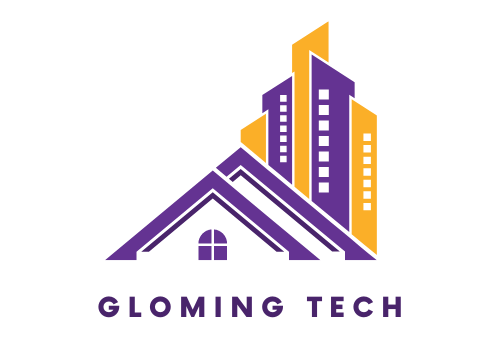The construction sector has always been synonymous with orthodox strategies and lethargic uptake of any forms of innovation. In contrast, this stereotype is quickly changing as virtual reality comes into play. VR is not merely a gimmick in terms of the gaming and entertainment industries anymore it is an indispensable medium which is revamping the strategies in which all the phases of construction projects take place.

Understanding Virtual Reality: A Brief Overview
According to research, VR is an artificial environment where one can go in and out and, in most respects, can be similar to the real world or even be totally different. This consists of wearing VR goggles or being in a VR environment that allows users to be part of an active 3D world. When related to the construction industry, VR permits designers, engineers, main contractors, and customers to create and experience 3D virtual models of buildings and other structures yet to be constructed.
Key Applications of VR in Construction
1. Design Visualization and Review
Formerly, drawing and planning of architectural structures is done using 2D blueprints or designing them as 3D models represented on a computer screen. Though effective, these methodologies need to be improved for accurate representation of design and spatial relations. It achieves this by allowing users to virtual ‘walk’ around the building before it is built.
Benefits:
- Improved visualization: Both Clients and project teams can go around the building’s life-sized model making the projects easier to visualize.
- Design validation: Issues A can be avoided since all flaws or problem areas are quickly relayed, verified, and adjusted; this will help reduce unnecessary expenses ten-fold.
- Better Communication: A communication barrier that exists between clients and designers is also resolved by use of Virtual Reality therefore it minimizes conflicts between them.
2. Virtual Construction Planning and Simulation

Construction planning entails elaborate logistics regarding the how and where the resources, personnel and equipment will be coordinated and placed. With VR, virtual sequences of construction activities can be viewed aiding the construction managers in planning effectively.
Benefits:
- Project Phasing: Observe various stages of construction processes and rank them in order of importance in terms of how much time is worth spending on them.
- Safety Training: Employees can be trained on the site in a virtual version of the real world where they can get accustomed to the complex surroundings without any risk.
- Dispute resolution: VR can also be wanting in conflicts such as a building structure and the ventilation and air conditioning systems interfering with each other on site.
3. Virtual Reality for Client Presentations
It is not an easy task to persuade clients and investors to approve designs or projects. VR is a great tool that makes these kinds of presentations more effective by providing an experience rather than just information.
Benefits:
- Experiential learning: The building can be walked through, and users can render suggestions which can be implemented instantly.
- Immersion: When clients experience the project through VR, they get closer to it and are likely to approve it.
- Cost-effective Design Process: In this way, going forward we will need fewer design changes by the clients after the design has been basically completed.
4. Collaboration and Remote Coordination
Projects where construction activities of large scale are being undertaken are usually cut across different physical locations and often there are a number of teams distributed across the region. With virtual reality, they can ‘walk’ into the same virtual world at the same time, where team members can manipulate the physical model even though they are located in a different place.
Benefits:
- Efficiency of teamwork: Teams can be working on the same virtual model from different locations.
- Less time is spent on correcting design errors: virtual meetings in virtual reality help participants to figure out design problems and correct them almost instantly.
- It minimizes costs on travel: that is, remote units do not have to travel all the time but can achieve effective collaboration on a project through the web.
5. Post-Construction Virtual Tours and Marketing
Besides showcasing the end product of the project, VR can also be used for promotional purposes concerning the project. This is especially useful for property developers who want to find buyers or lessees for their properties before construction is finished.
Benefits:
- Powerful Selling Device: Virtual reality tours assist prospective buyers or lease holders by allowing them to actually experience the property.
- Increasing Wider Audience: Videos of the tours can be shared online which will help to attract investors from all over the world.
- Lower Costs of Model Homes: Virtual tours can be used instead of physically constructing model homes which will help the developers cut down the cost.
Benefits of VR in Construction
1. Enhanced Visualization and Design Communication
Through the use of VR, the stakeholders get a better ‘feel’ of the design, which cannot be achieved by the traditional methods. In this way, communication is improved, less design iterations are made and the final theme of the product meets the client’s expectations.
2. Improved Efficiency and Accuracy
Construction rework and delays are preventable with the use of VR as design problems and construction conflicts can be solved at the early stages. This is made efficient in that construction processes can be simulated and time and resources planned effectively.
3. Increased Safety and Training
VR enables training of workers on complicated operations and emergency protocol. So, chances of hazards on the work site is reduced and workers are adequately ready before entering danger zones.
4. Cost Savings
Investing in VR technology in an organization may seem costly at the beginning but the return comes in the form of expenses such as retraining staff and incorrect ordering of materials which may involve less alteration of previous designs.
5. Enhanced Client Engagement
Customers who were able to manipulate and walk through the project in VR are happier with the results than clients without such involvement. Such satisfaction of clients also implies that there will be more chances of clients returning and new ones joining.
Challenges of Implementing VR in Construction

1. High Initial Costs
Involving in VR hardware, software, and training also requires investment and is sometimes a strain on finances. These small to medium sized construction companies may not be able to support this cost without a return on investment (ROI).
2. Technical Expertise Required
The planning and use of VR must be undertaken with a minimum level of technological skill. Construction firms will perhaps have to hire or train manpower to use and manage the VR systems.
3. Integration with Existing Workflows
VR may be tough to incorporate in workflows that are already in place. It requires a transformation of the design, planning and implementation of the projects which sometimes teams that are used to the basics of doing things may not be comfortable with.
4. Hardware Limitations
Undoubtedly, there has been major improvement regarding the advancement of VR technology, however, there are still shortcomings regarding hardware efficiency, resolution of devices and ease of use. For most users, extended use of VR systems makes them uncomfortable and in some cases, users get motion sickness.
5. Limited Adoption and Awareness
However, despite this benefiting factors, VR use in the construction related activities is still quite limited. The major problem being that many of the stakeholders do not know about this technology and thus persuading them to be part of this new world can be quite a difficult task.
The Future of VR in Construction
There are many new and unique trends that will propel the revolution of VR in construction and even enhance its potential.
1. Integration with Building Information Modeling (BIM)
With BIM adoption increasing, there is a higher possibility that connecting BIM with VR will be advantageous in enhancing the capabilities of design reviews, clash detections and project coordination processes.
2. Augmented Reality (AR) and Mixed Reality (MR)
VR together with AR and MR will create even more unthinkable tools for enhancement in construction. One of those tools is AR that permits virtual models of components to be used in real environments, MR seeks to blend these different realities in an approach where both digital images and physical objects can be present.
3. Cloud-Based VR Platforms
The nature of VR applications is geared towards enhancing the work of teams that are dispersed geographically by enabling such teams to partake in collaboration in a given project, thanks to VR applications that do not require sophisticated VR devices and setups.
4. AI and VR Integration
Use of Artificial Intelligence and Virtual Reality as a technology can enable offering of advanced predictive analytics, enhance the automation of the design process and increase the interactivity and the cybernetic feedback of the virtual space.
5. Increased Accessibility and Affordability
The affordability and versatility of VR technology means that it is only a matter of time before it is widely embraced in construction. Eventually this will lead to increased efficiency of the industry thus making VR a commonplace tool in design, planning and building collaboration.

Conclusion
The building sector is changing due to new uses of virtual reality (VR) technology that may strengthen visualizing, planning, and implementing construction projects. Among the strengths of construction processes, virtual reality allows improving collaboration with the design team as well as enhancing safety and productivity which is crucial for construction companies in the fast evolving industry. Even though some obstacles have to be resolved, the way VR is changing the building industry cannot be disputed.
As development proceeds, the potential to advance to those who dare step into VIRTUAL REALITY will be warding off the voice of lagging behind the market in the digital construction era.
FAQs: Virtual Reality in Construction
1. How is VR used in construction?
In the improvement of construction techniques, VR has applications for design visualization, planning construction, presenting ideas, working from a distance and marketing after the building is done. Thanks to this everyone engaged in the building process is able to spatially comprehend the construct and interact with it in a virtual reality setting.
2. What are the benefits of using VR in construction?
VR changes the way the design is imagined and communicated, streamlining processes and precision, increasing safety during examinations, savings of resources, and facilitating customer response rate with enjoyment.
3. What are the challenges of implementing VR in construction?
Constraints factors include high start-up costs, technical know-how, incorporation to existing workflows, physical apparatus constraints, lack of awareness and low level of industry uptake.
4. What is the future of VR in construction?
The prospects of VR in construction are the tendency towards BIM application, AR and MR use, VR apps that function over the internet, AI inclusion, and ease of use and low cost subsidizing further usage of VR within the sector.
5. How does VR improve safety in construction?
Constructing Realities does present an opportunity for workers’ training in a safe environment where they can learn to move about a building site, operate machines and adhere to safety measures without the fear of being injured. This enables training of workers for situations which they are likely to encounter on site.
